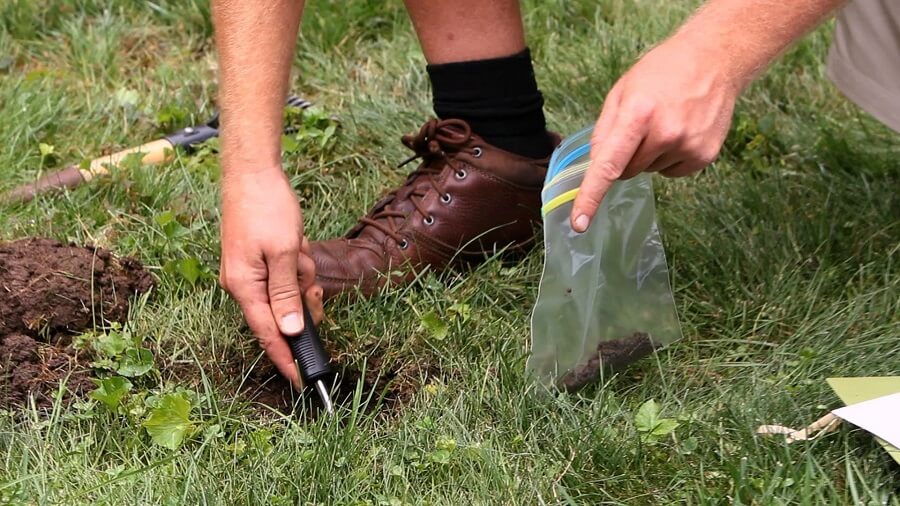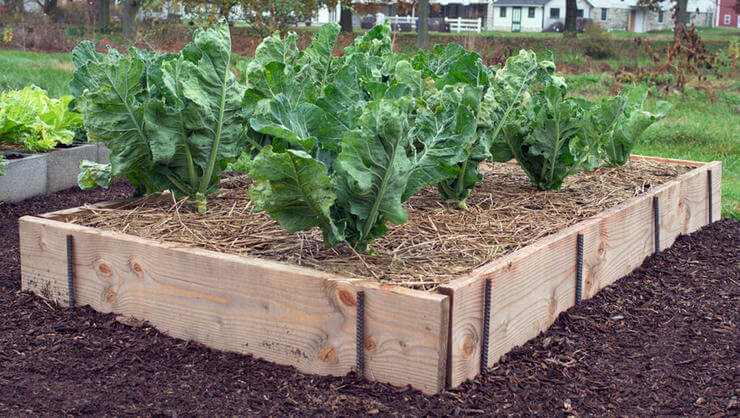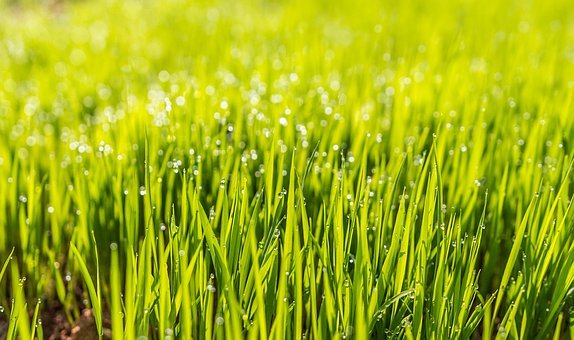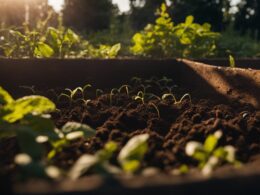If your garden has clay soil, then you know how challenging it can be to grow anything according to your desires. Since changing the type of soil in your garden is not an option (unless you move), you’ll just have to make the best of it. Make no mistake, clay soil also has its benefits, and it is on those benefits that you should focus. Even if you can’t replace the soil, there are things you can do to improve its quality. Today, we’re going to tell you all about the most important clay soil properties and how to amend clay soil for vegetable gardening.
Clay Soil Properties
As we’ve already mentioned, clay soil doesn’t only come with negative qualities. It also has some positive ones that can make it a good choice in some cases. In order to give you a better understanding of the type of soil you have in your garden, we’re going to discuss both its positive and negative aspects.
As a first positive aspect, you should know that clay soil is full of nutrients. Why is that? Because its particles are negatively charged. This means that they’re attracted to positive particles, such as magnesium, potassium, and calcium. Another benefit of this type of soil is that it preserves moisture better than any other. This is, of course, beneficial for plants especially in the summer, when they risk being exposed to droughts.
When it comes to the negative aspects of clay soil, there are many things that make this type of soil less desirable. One important aspect would be the fact that when the weather is extremely hot, the soil tends to crack and form a crust on the surface. On the other hand, when the soil isn’t dry, you might notice how it sticks to your shoes and to any gardening tool you use.
Clay soil also tends to form clods that you might have a hard time separating. The fact that the soil can become so compact is not good news for your plants since their roots might not grow as well. This type of structure is what makes clay soil so heavy and thick. It’s also the reason why it takes a long time for the soil to warm up in the spring. Clay soil also drains quite slow, which in certain instances can be a bad thing. For instance, water cannot reach deep soil, only surface one. Finally, you might also notice this type of soil heaving in winter.
How Can You Tell If You Have Clay Soil in Your Garden?
Before getting into the process of how to make clay soil good for planting, allow us to mention the steps you have to take to determine whether or not your garden has this type of soil. The steps are extremely easy to accomplish, so you can do this test whenever you want. All you have to do is go to your garden and take a soil sample.
Then, feel the texture with your hands. If it feels slick and you notice it sticking to your fingers or leaving streaks on your hands, you might be dealing with clay soil. Moreover, if after you rub it, the soil looks shiny and not at all rough, then you can be sure your garden has clay soil. Other characteristics that can help you identify clay soil are its ability to stretch and not crumble as fast as other types of soil, and its stickiness when in contact with water. This type of soil is also usually brown or has reddish shades to it.
How Can You Improve Clay Soil for Gardening?
1. Test It
In order to test your soil, you’re going to need a special soil test kit. We recommend the 3-in-1 Soil Meter from Amazon that tests light, moisture, and pH levels. While the other two are important as well, the most important characteristic that you have to look out for is the pH. No matter the type of soil you have in your garden, your plants will only be able to develop properly if the soil has the right pH level.
Since we’re talking about vegetables, you should know that the right pH level for them is somewhere between 6.5 and 7. Even if clay soil contains plenty of nutrients, your plants won’t be able to reach them if the pH level is too high or too low. In most cases, the pH level is higher than normal. That means that you’ll have to come up with ways in which to lower it.
2. Add Gypsum
One of the most common ways to lower the pH level of your soil is to add gypsum. This will provide your soil with calcium, allow the water to drain faster, and put pressure on the clay particles, thus causing them to break apart. That way, the soil will be looser. If you don’t know where to find gypsum, allow us to recommend this Garden Gypsum Fertilizer from Amazon. You can also use builder’s sand instead of gypsum. However, be careful not to use fine sand, since this might only make matters worse. A coarse type of sand is the best option.
3. Add Organic Matter
Organic matter isn’t only beneficial for clay soil, but it can definitely work wonders for it as well. If you want your soil to be healthier and easier to plant vegetables in, you should consider adding some organic matter to it. Organic matter can be anything from grass clippings, to chopped leaves, straw, hay, manure, peat moss, and so on. The best time to add it is in fall. However, you can also do it a couple of months before you actually start planting anything in your garden. The layer of organic matter should be at least 6 inches thick, but no more than 12. Adding it will help your soil become more nutritious, and increase humus and beneficial microbes.
4. Grow a Cover Crop
Cover crops are also considered organic matter. The difference is that you’re going to need more time and patience to grow cover crops than to spread organic matter such as manure on your soil. However, growing cover crops is definitely worth it. They will make it much easier for you to grow vegetables since they make the soil more workable. Some useful cover crops are clover, fava beans, buckwheat, or winter wheat. You’re going to have to plant them the year before you want to start your vegetable garden. Not only will they provide your soil with organic matter. They’ll also bring nutrients to the surface of the soil, just in time for your actual crops.
5. Add Organic Mulch
As we’ve mentioned above, clay soil is extremely compact. This stops the plants’ roots from developing properly, and also causes the soil to crack when it’s too hot outside. You can try to solve this issue by adding about 2 to 3 inches of organic mulch in the growing season. You can always supplement this quantity if you feel like your soil needs it.
But why is organic mulch so good for clay soil? Well, first of all, it prevents you from continuously stepping on the soil and making it even more compact than it already is. Second of all, organic mulch will eventually break down, helping the soil become looser, just like organic manure does. If your garden will be empty in winter, you should cover it with organic mulch. This will protect your soil from rain and snow, which could make it even more compact.
6. Try Not to Till the Soil as Much
Whenever you till the soil, the organic matter that you’ve mixed with it decomposes even faster. That’s because by tilling, you allow oxygen to penetrate the soil, thus accelerating that process. The faster the process is, the fewer nutrients your soil is going to be able to draw from the organic matter. Consequently, we advise you to try to turn the soil as little as possible. Just amend the top layers of your garden beds.
7. Build Raised Beds
Finally, if no other clay soil treatments work, and you really want to plant vegetables in your garden, you can always try to avoid clay soil by building raised garden beds. You can do that on top of the soil, and fill them with compost and loam. These containers will allow you to grow vegetables without worrying that the clay soil might damage them. Moreover, plants grown in raised garden beds are easier to take care of as well.
Summing It All Up
If you live in an area with clay soil, but you really want to grow your own garden and stop depending on supermarkets for your vegetable intake, we hope today’s guide will be of help to you. With a little bit of extra work, you can make clay soil crop-appropriate. However, you need to be patient and acknowledge the fact that clay soil will never be as good for vegetable growing as others. The key is to try to make the best of what you have.
If you want to find out how to build a raised garden bed, take a look at the video below.











